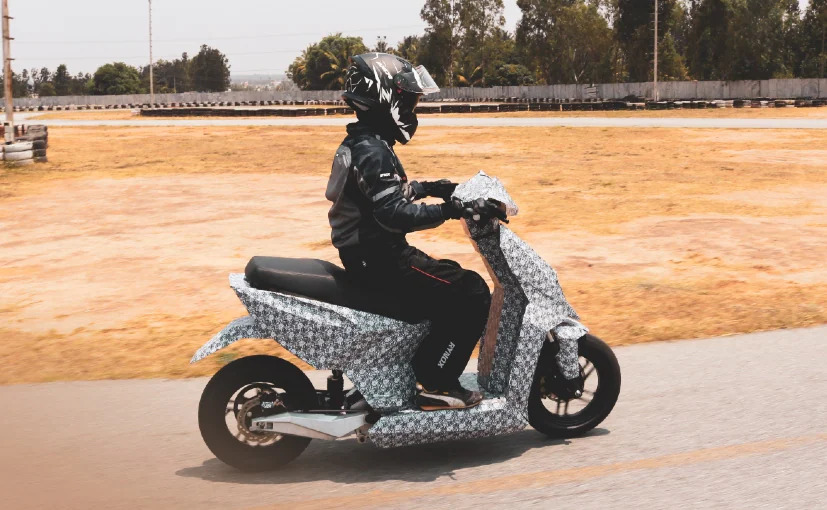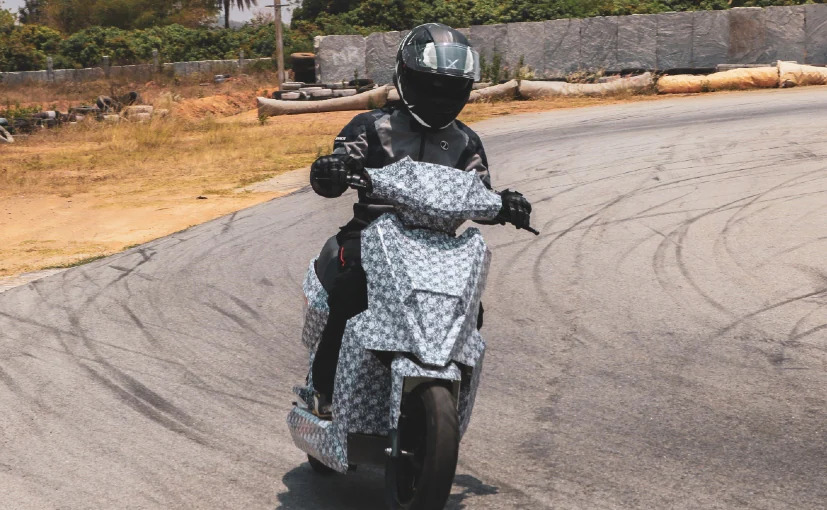Exclusive: How the Simple Energy electric scooter achieves 200+ km of range
The Simple One will be the new quickest scooter in the market

Bengaluru-based EV startup Simple Energy will unveil its maiden electric scooter later this month. Its biggest feature will be the ability to go over 200 km of range on a single charge — double of what the existing electric two-wheelers offer. Not just that, it is also pegged to claim a few other records when it finally becomes available.
Ahead of the August 15 unveiling, TechRadar India exclusively talked to Suhas Rajkumar, the CEO and founder of Simple Energy about how their Simple One electric scooter will achieve a benchmark-setting range, performance records, manufacturing plans, charging network and expansion in India.

This piece includes inputs from Suhas Rajkumar, CEO and Founder of Simple Energy
Founded in 2019, Simple Energy had the objective of creating an electric scooter that would be capable of achieving more than 200 km of range, thus doing away with range anxiety that plagues most EVs today. Called the Simple One, it will be unveiled on August 15. Moreover, it was also confirmed that it will sell at around Rs 1.2 lacs. At that price, it would not only be cheaper than the competition but also offer more features and better performance.
Unsure of how that would be pulled off, we asked for a deeper look at how the e-scooter was designed from scratch and everything else it will be capable of.
How the 200+ km of range was achieved
Since the beginning, Simple Energy’s goal was to create a scooter that would be able to offer more range than the average electric two-wheeler and launch it only when it was capable of crossing the 200 km threshold.
The biggest factor contributing to this industry-leading range is the custom motor that was developed by Simple Energy. In fact, it is the only OEM in India to have designed, developed and manufactured its own powertrain. Similar to smartphones and laptops, this sort of vertical integration allows the Simple One to be far better optimized to make the best use of the motor as it was designed keeping the needs of the vehicle in mind — tailor-made keeping the performance and range requirements in mind.
A proprietary direct-drive motor was developed for the Simple One.
Suhas believes that this is Simple Energy’s biggest strength and will give them a competitive advantage. “One who owns the tech owns the market”, he proclaimed. In the future, it hopes to make its powertrain expertise a business avenue, but will not directly license motor designs to others. In fact, unlike other companies, it actually manufactures the motors in-house to further protect the IP.
Sign up for breaking news, reviews, opinion, top tech deals, and more.
Along with patents for the motor, it even has patents on all the mechanical components, design, battery pack, thermal management system, etc. A lot of time was also put into designing the scooter to make it more aerodynamic and bring the weight to under 110 kg from around 130 kg. Even the headlights are a custom solution to reduce auxiliary power consumption.
All of these combine to give Simple Energy’s 4.8kW battery 35% higher efficiency than similar solutions.
An uncompromised riding experience
Naturally, our next enquiry was whether the range will actually be achievable or will riders have to go really slow and drive carefully. Much to our surprise, Suhas says that all users will be able to easily cross the 200 km mark.
For EVs, an easy way to give a higher range is to limit the vehicle’s output and thus consuming less power. But this usually means reducing the performance significantly, which can hamper the riding and safety experience.
We’re glad to report that the Simple One’s Eco mode will be able to touch speeds of 45-50 kmph, which is higher than the average city riding speed. This means that users should not only be able to have a comfortably quick ride, but also have enough power to overtake others when needed.
The Simple One will be the new quickest scooter in India.
There will be four riding modes available on the scooter, with the top mode offering the quickest acceleration on any scooter — 0-40 kmph in 3.1 seconds and 0-60 kmph in 3.6 seconds, besting the Ather 450X’s 0-40 kmph of 3.3 seconds. The top speed will be close to 100 kmph.
Second-mover advantage

For a company that has been in existence for only about two years, it’s a feat to be able to create something so high-performance. We inquired about how such a short turnaround was possible, as electric vehicles usually have much longer development cycles.
Suhas explained that while the company was registered in September 2019, the work actually started in December 2018. Most of the 60 employees that worked on creating the Simple One came from backgrounds that were directly or indirectly related to EVs, which greatly reduced problem-solving times. About 70% of the time and effort was spent on perfecting the powertrain, with a 25-member team dedicated to that. In the coming months, the company strength is expected to double.
Simple Energy also enjoyed the second-mover advantage as the industry is still at a nascent stage. The supply chain and vendors are more developed now, which helped it understand the market better and derive better solutions.
Ather Energy’s CEO, Tarun Mehta, echoes this sentiment as he doesn’t see other electric scooter makers as competition, but as partners who are helping the segment mature faster, bring greater economies of scale and improve the supplier network.
99% components sourced from India
When Simple Energy started, it had a target of about 85% component localization as it anticipated a higher reliance on imports for some parts. However, once development picked up the pace and investors came on board, it was able to achieve almost complete localization. On the Simple One, every component except the cells, is from India.
In the coming weeks, the company will announce new rounds of funding and its manufacturing plans as it inches closer to delivery. A factory with a capacity of producing 50,000 units is in its final stages.
Interested consumers will be able to book their Simple One electric scooter soon after the launch, but deliveries will begin early next year, starting with metro cities. There will also be experience centres in each region to better serve customers. The first company-owned centre will come up in Bengaluru soon.
Designed for the future
Back in April, Simple Energy released photos of its Mark 2 prototype in action on a test track. While it was under wraps, some design elements could still be seen. Suhas tells us that the final scooter of the Simple One is much better and more refined than we got to see earlier.
A lot of improvements were made on the inside as well. The battery is IP68-rated for water and dust resistance, the placement of the battery pack and motor has been improved for higher efficiencies and better centre of gravity, along with a bunch of minor tweaks.
As seen on other electric scooters, even the Simple One will have a 7-inch touchscreen dashboard that will be the heart of the experience. Along with acting as the control centre, it will have features such as GPS navigation, 4G connectivity, reverse gear, real-time efficiency, customizable themes and accents, Bluetooth connectivity for calls and music, and ride data.
On-board GPS, ride modes, 4G, Bluetooth connectivity, OTA updates — the Simple One will have it all.
It will also come with a patented “smart stand” which is supposed to make the vehicle a lot safer. More details will be shared at the launch.
There will be two features that will be unique to Simple Energy at launch. First up is a vacation mode which puts the scooter in a state of deep sleep, where its battery will not drain for a period of 6-7 months.
More interestingly, there will be an option to set a scheduled start time on the app. This will ensure that the One is warmed-up and ready for use when you need it, thus saving the battery some hassle and degradation that a cold boot would bring.
There will be more features added via OTA updates in the future, but the company wants to wait and gather more usage data to understand and prioritize additions.
A fast-charging network is also being set up in the launch cities for the users. While the connector will be proprietary, it is open to the idea of eventually letting other vehicles use its infrastructure.
Looking forward
With the launch just two weeks away, Simple Energy has busy days coming up. If the claimed specs and features are as true as promised, it will have little to worry about from a product point of view. Suhas assured us that even with so many upgrades, the Simple One will still be able to achieve the price tag of Rs 1.1-1.2 lacs.
When asked about what he’d like to see from the Indian EV sector in the future, he was wishful for government subsidies to encourage manufacturing.
- Ather 450X review: everything you need to know before buying
- Simple Energy electric scooter to be unveiled on August 15 in India
- Ola Electric scooter revealed ahead of its launch

Aakash is the engine that keeps TechRadar India running, using his experience and ideas to help consumers get to the right products via reviews, buying guides and explainers. Apart from phones, computers and cameras, he is obsessed with electric vehicles.



